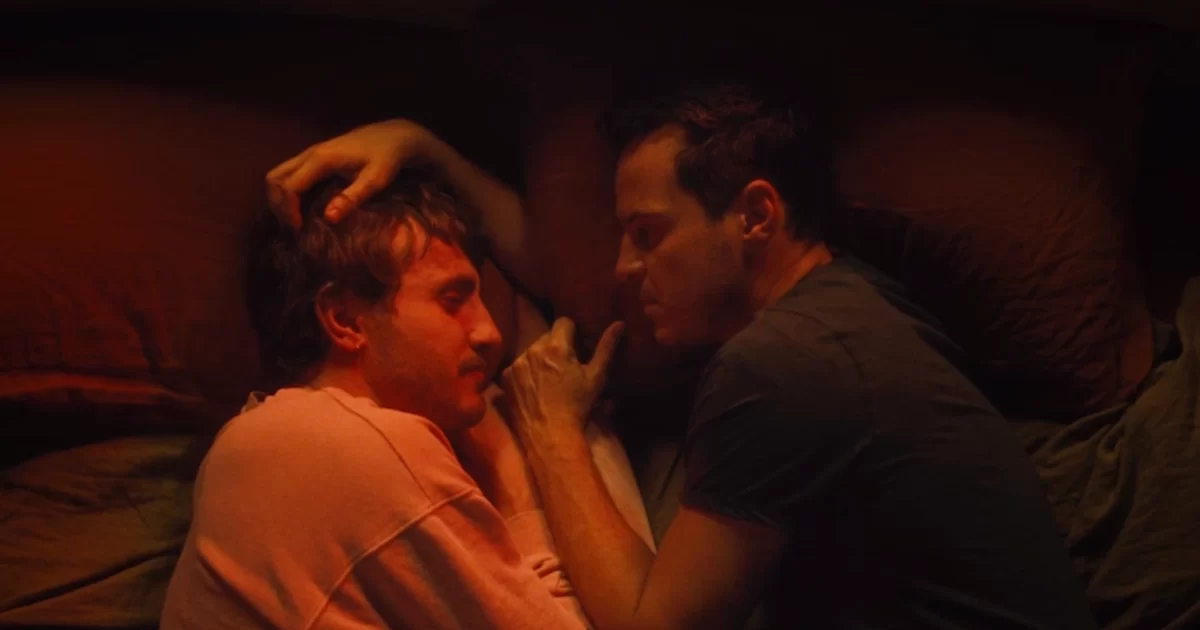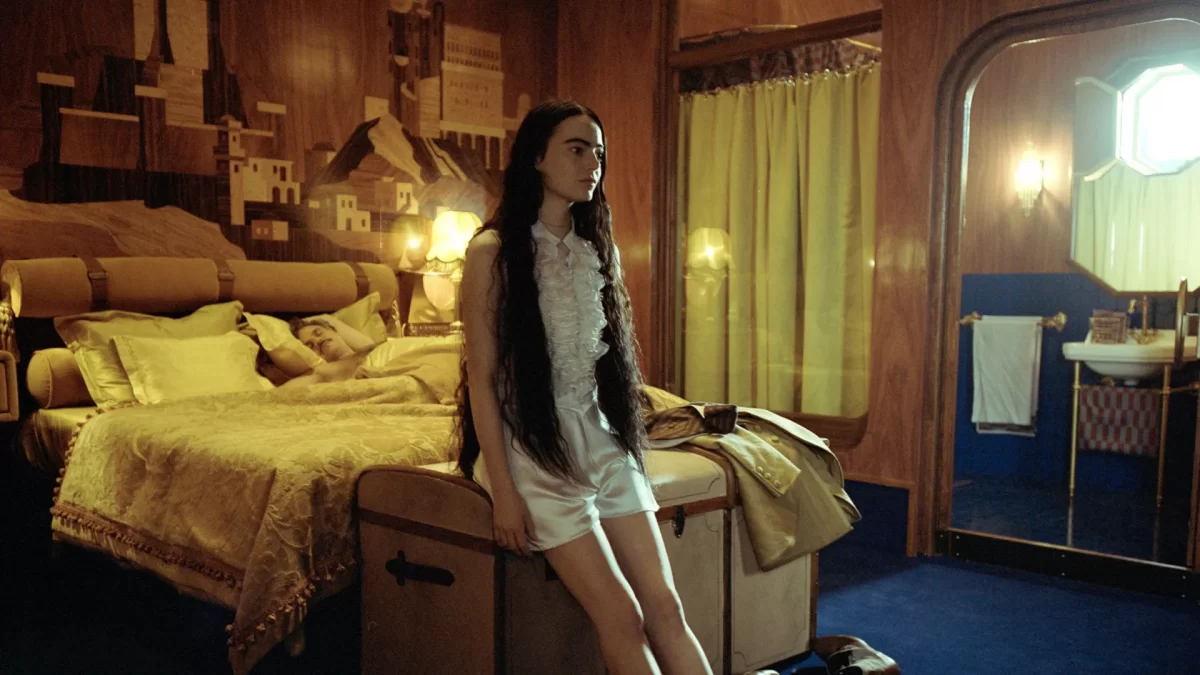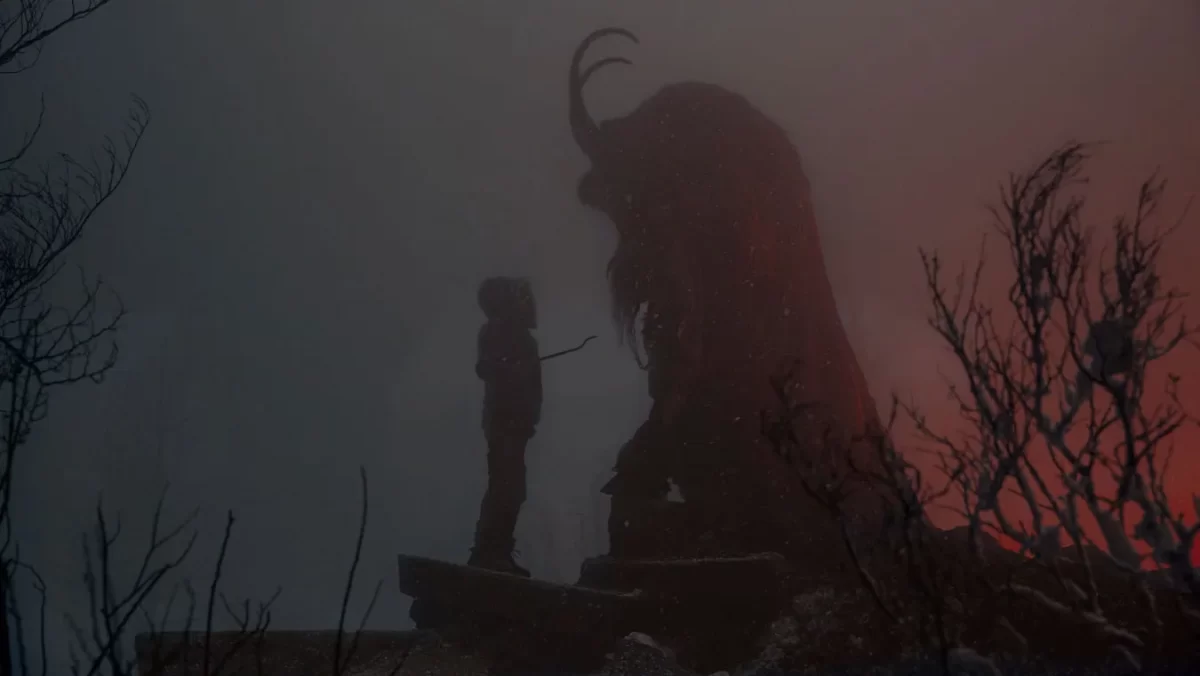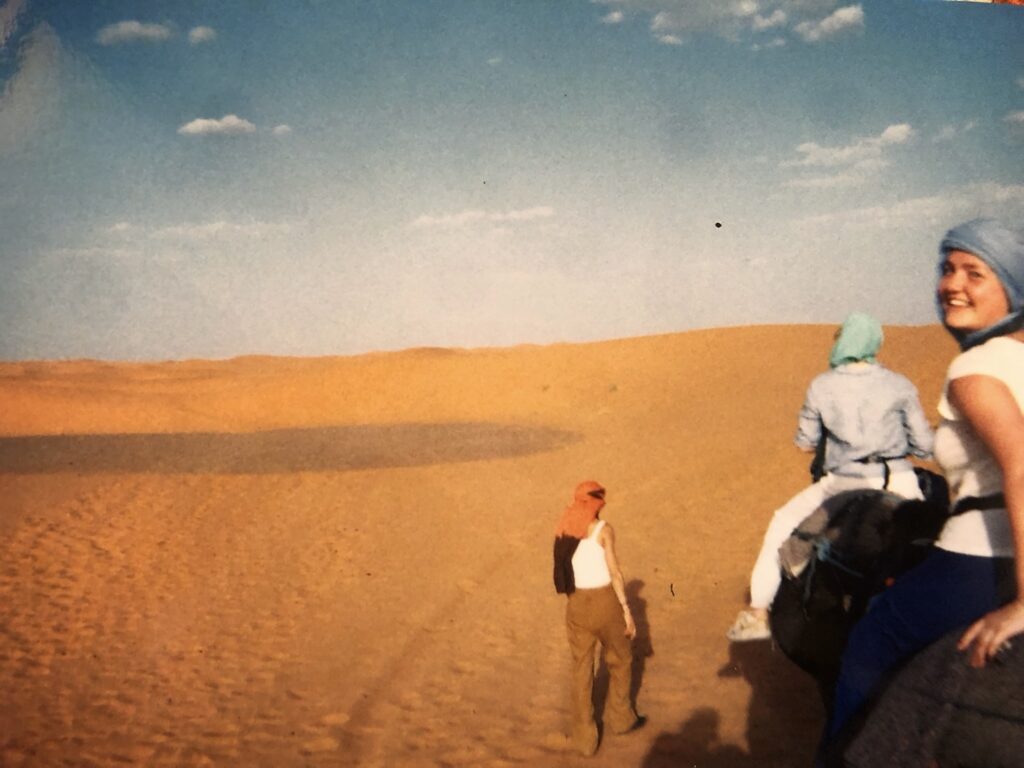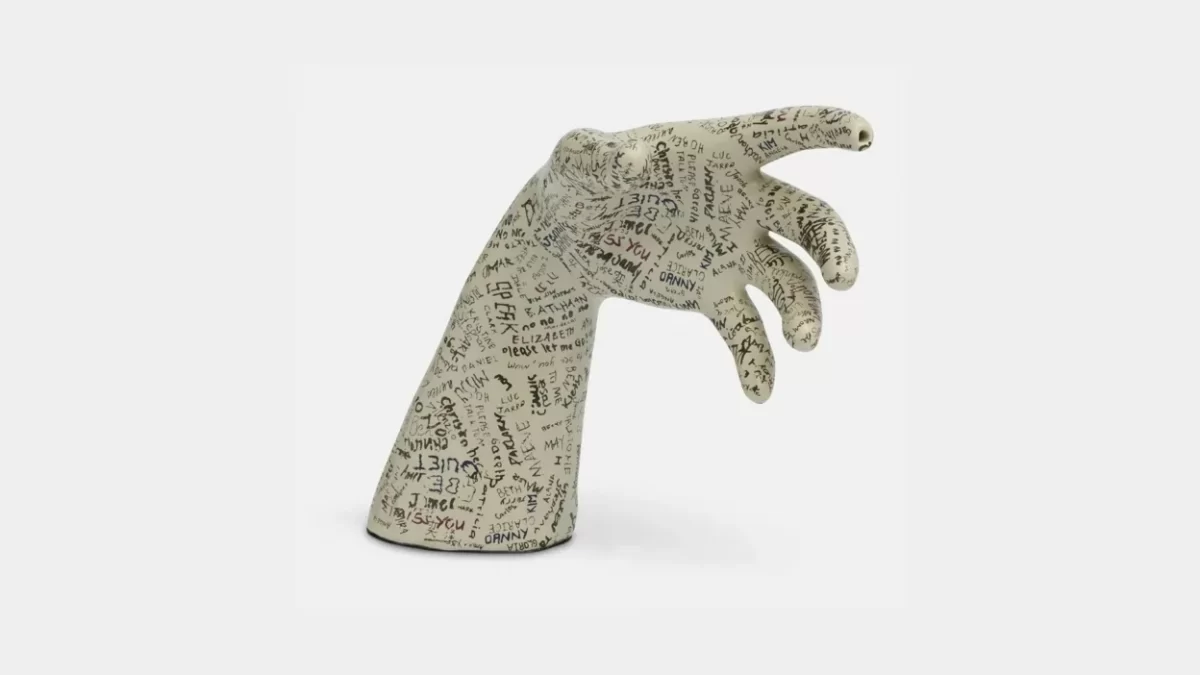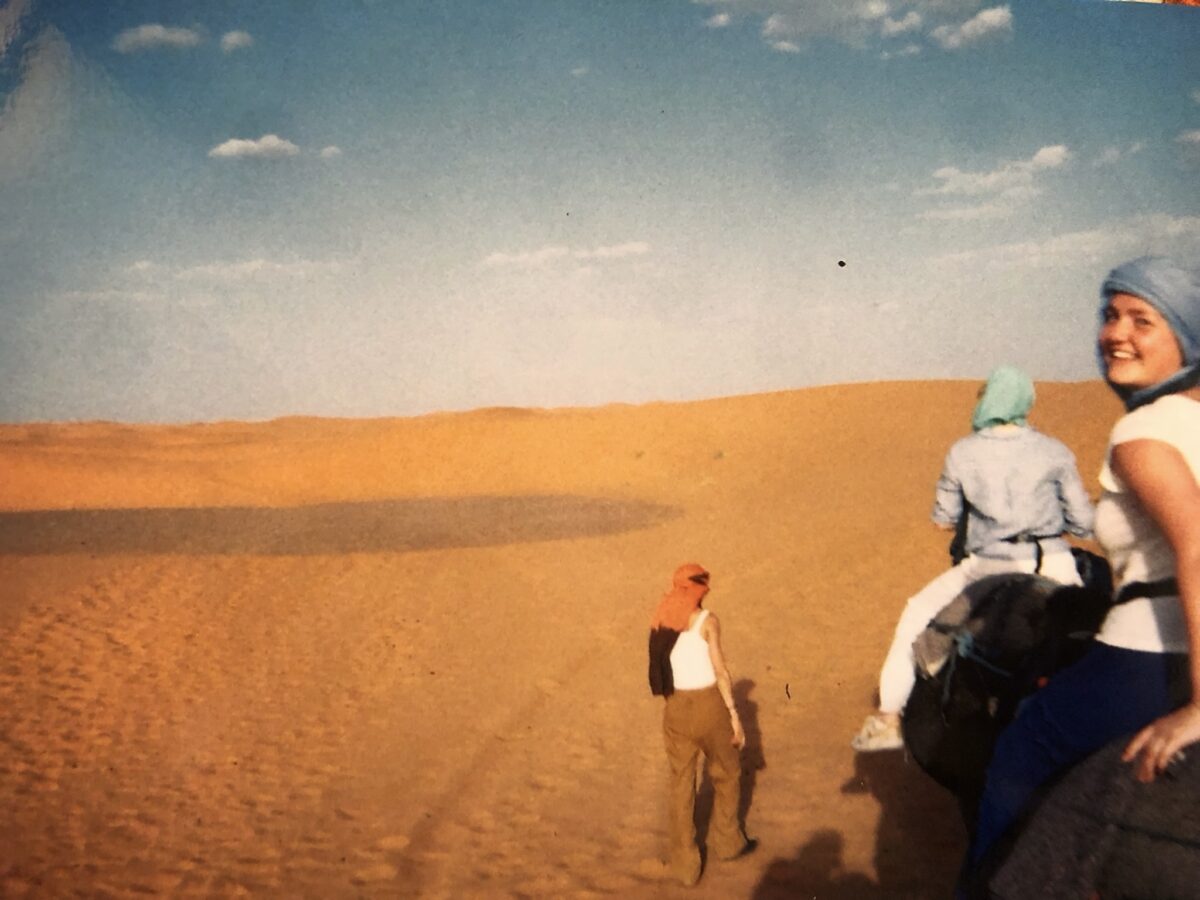By Edward Bayliss
If I could see the world through the eyes of a child
What a wonderful world this would be
In a nondescript apartment block somewhere in London, screenwriter Adam (Andrew Scott) struggles to write about his dead parents. As he reaches for a ready meal, the cold blue light from the inside of his refrigerator illuminates his bent-backed posture. Despite his enormous apartment windows overlooking the nation’s capital below, we only really see Adam in the white glare of his television or computer screens. We are relieved when Scott’s character decides to leave the confinement and impersonality of his high-rise block to travel to his family home, presumably in search of inspiration. Adam stands atop a field and watches the slant of sunset ripple across trees and grasses. Then, in a strangely unthreatening supernatural moment, the voice of a man in the background beckons him to come ‘home’. The man is Adam’s father. ‘Dad’ (Jamie Bell) leads Adam into his 1980s decorated home where ‘Mum’ (Claire Foy) greets him affectionately. Soft amber light swims across yellowed wallpaper, and a thin cloud of cigarette smoke lends a grainy texture to the shot. Adam revisits his childhood (trauma); most notably, to reconcile his sexuality to his parents who were unwitting products of 1980s state-sanctioned homophobia.
Andrew Haigh’s film operates, apparently, across the separate plot paths of Adam’s personal and familial history, and the ‘real-time’ story of his delicate but passionate relationship with fellow apartment block dweller, Harry (Paul Mescal). We first meet Harry as he knocks tentatively on Adam’s door – he grips a bottle of whiskey – an object that will gain some significance at the film’s climax. Adam confronts his loneliness by wandering somnambulantly into the oneiric episodes of his childhood, whereas Harry drinks deep in an act of burial and suppression. He has, as he admits defeatedly, ‘drifted to the edge’. They begin to talk. And talking, we should know already, is the only avenue of escape from the torture of loneliness.
Above all else, All of Us Strangers is an acutely honest film. Unashamedly and forthrightly, the lens isn’t afraid to dig through the rubble of lost childhoods and reclaim something of intense value. With a cast of just four, whose faces seem always to fill the screen in extreme close ups, it perhaps can’t help but be sincere. Andrew Haigh’s film, however, lifts the lid on the traditional trauma-confrontation film and takes us on welcome diversions we didn’t know were accessible. The director focuses on the remarkably abstract and obscure way in which mental turmoil affects memory.
Terrifyingly, Adam’s mind mangles time and reality. It has its toll on him – at one moment he sees his own face warped into some semblance of a screaming Francis Bacon portrait on the curved tube window. Like many directors before him, Haigh enjoys the use of glass and its distorting qualities in his shot selections. Adam finds it too easy to slip into his childhood life as it becomes an attachment onto which he clings relentlessly, almost unhealthily. Harry warns Adam: ‘Don’t let this get tangled up again.’
We learn two things from Adam’s progress through the film: 1. That you must coexist with your past self; 2. That in equal measure, you must learn to leave that past self behind when you no longer need it. Adam’s parents, you could say, are almost pseudo-Nanny McPhee characters, reminding us that ‘When you need me, but do not want me then I must stay. But when you want me but no longer need me, I have to go.’
The lyrics that commence this review are heard near the end of the film when Adam meets with his parents for the last time. With golden light seeping into the edges of the shot, Scott’s character and his parents eat at their favourite American-style diner in Croydon. In an incredibly touching moment, Adam says goodbye for good, and they urge him on to his wide futures with Harry. Yes, Adam has seen the world again through the eyes of a child, and it was instrumental in his reckoning with the past, but he must now learn to look ahead, and wrestle with the complexities of 21st C. life and living.

